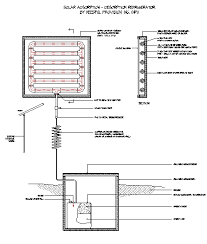
Breaking News
 Christmas Truce of 1914, World War I - For Sharing, For Peace
Christmas Truce of 1914, World War I - For Sharing, For Peace
 The Roots of Collectivist Thinking
The Roots of Collectivist Thinking
 What Would Happen if a Major Bank Collapsed Tomorrow?
What Would Happen if a Major Bank Collapsed Tomorrow?
Top Tech News
 Travel gadget promises to dry and iron your clothes – totally hands-free
Travel gadget promises to dry and iron your clothes – totally hands-free
 Perfect Aircrete, Kitchen Ingredients.
Perfect Aircrete, Kitchen Ingredients.
 Futuristic pixel-raising display lets you feel what's onscreen
Futuristic pixel-raising display lets you feel what's onscreen
 Cutting-Edge Facility Generates Pure Water and Hydrogen Fuel from Seawater for Mere Pennies
Cutting-Edge Facility Generates Pure Water and Hydrogen Fuel from Seawater for Mere Pennies
 This tiny dev board is packed with features for ambitious makers
This tiny dev board is packed with features for ambitious makers
 Scientists Discover Gel to Regrow Tooth Enamel
Scientists Discover Gel to Regrow Tooth Enamel
 Vitamin C and Dandelion Root Killing Cancer Cells -- as Former CDC Director Calls for COVID-19...
Vitamin C and Dandelion Root Killing Cancer Cells -- as Former CDC Director Calls for COVID-19...
 Galactic Brain: US firm plans space-based data centers, power grid to challenge China
Galactic Brain: US firm plans space-based data centers, power grid to challenge China
 A microbial cleanup for glyphosate just earned a patent. Here's why that matters
A microbial cleanup for glyphosate just earned a patent. Here's why that matters
 Japan Breaks Internet Speed Record with 5 Million Times Faster Data Transfer
Japan Breaks Internet Speed Record with 5 Million Times Faster Data Transfer
ADSORPTION-DESORPTION SOLAR REFRIGERATOR

The solar refrigerator, developed by NPI, is a simplified and improved version of prior solar adsorption-desorption refrigerators ---refrigerators developed in recent years in Germany, France, and the U.S. All of these solar refrigerators have no moving parts. Water is used as the working fluid. The naturally occurring, highly porous silicon compounds (zeolites) are used as adsorbers. NPI's unique solar powered refrigerator produces about 5 lbs. of ice daily per cu. ft. of storage space.
NPI's seeks to help meet food storage needs for Third World families, with locally constructed solar refrigerators having the following parts:
1. An insulated, open-top solar collector box, about 7 ft. x 7 ft. (painted black), with
two-layers of glass (or other glazing) attached to the open-top. This box is used to collect solar heat via exposure to direct sunlight. A single 2 1/16-inch hole is drilled, on one side, to allow the exit of a 2-inch PVC pipe (see drawing).
2. A container, for zeolites, made of 6-inch PVC pipe generally forming a square

 The State's Last Stand
The State's Last Stand


